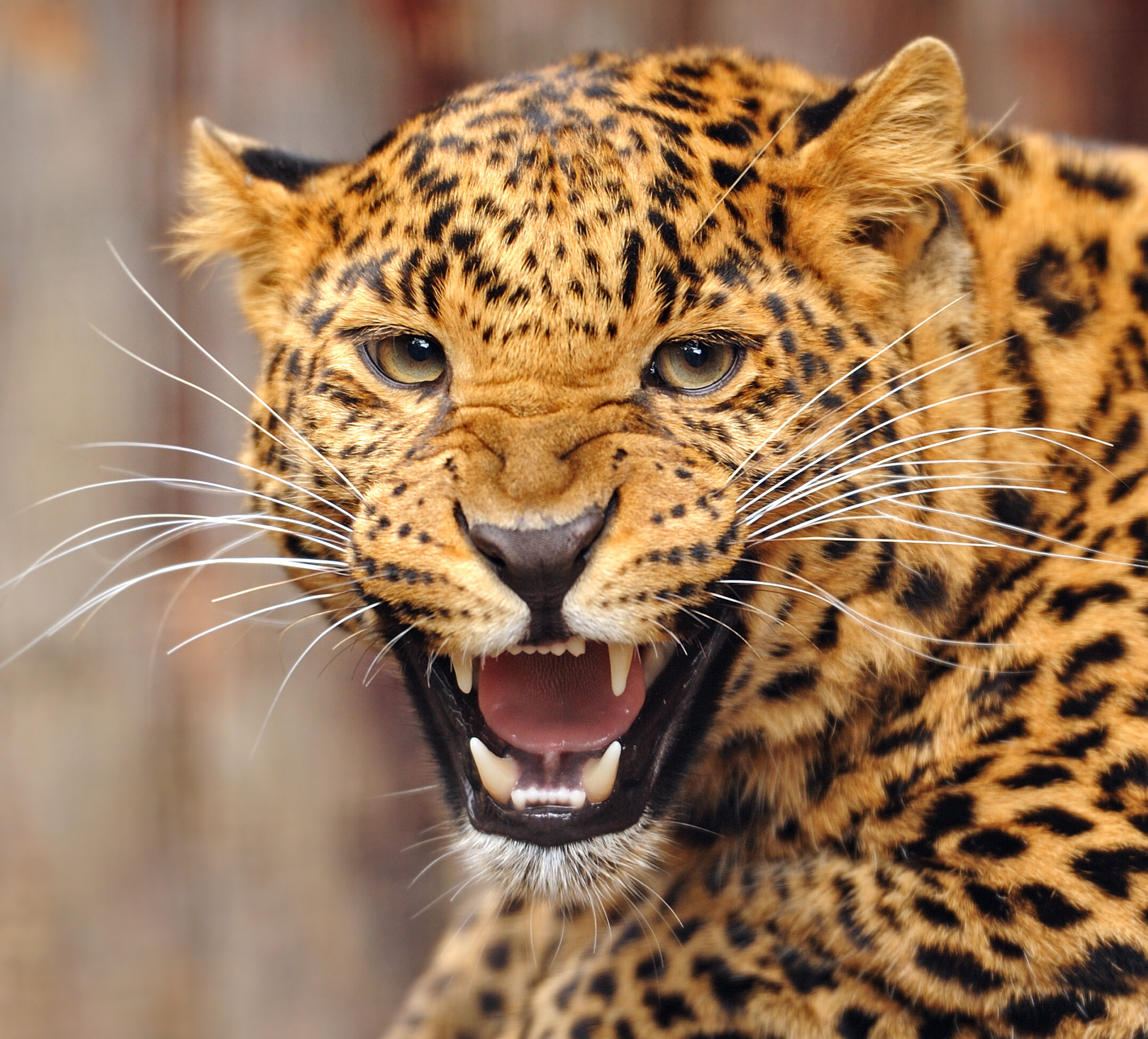The jaguar is a big wild cat.
Some are yellow with black spots.
Some are black with black spots.
A jaguar kills its prey with one big bite.
It climbs trees and swims well.
The name 'jaguar' comes from a South American Indian word 'yaguara', which means 'a beast that kills its prey with one bound'.
©Getty Images
What are jaguars?
The jaguar is the largest cat found in the Americas, and the third largest of the cat family (lions and tigers are bigger). It is also one of the four cats that roar. Its roar sounds like a series of hoarse coughs.
Cats are part of the mammals group of animals.
Habitat and Distribution (where jaguars live)
Jaguars live in wet lowland areas, swampy grasslands near rivers or lakes. They are found in both North and South America.
A jaguar in dense vegetation of the Amazon rainforest©Getty
In the southern part of the USA they are found in Texas, in Arizona's Cerro Colorado Mountains, in the southern part of California, and in New Mexico. In Central and South America, jaguars are found in rainforests, most particularly the Amazon rainforests.
What a jaguar looks like
In the dappled light of its habitat a jaguar’s fur is a good camouflage. ©Getty
Jaguars are often confused with leopards, but the jaguar is a larger, more solid animal with a broad head and shorter legs and tail.
A jaguar's spots are also different. On its sides and back, a jaguar's spots are each a circle of -spots around a central spot (called a rosette), while the spots on the legs, head and underside are a solid black. A jaguar's fur is generally yellowish brown, but can be white, or black with black spots.
Did you know?
Some jaguars and leopards appear to be black when a gene in their bodies can cause the fur that would be yellow to be black, while the black spots are a slightly darker black. This occurs in jaguars and leopards but not in other cats big or small.
Black jaguars and black leopards are sometimes incorrectly called black panthers. However, there is no separate species (kind) of big cat called panther. The scientific Latin name of the cat group jaguars belong to is ‘Panthera’, which is probably where that misunderstanding has come from.
This is a black jaguar, not a panther! See the black spots through the black fur. ©Getty Images
Jaguars have very strong muscles on their front legs and shoulders that help them to capture prey. There are long claws on the front paws for grabbing and holding prey. Like domestic cats, they can pull their claws back or stretch them out.Their back legs are longer than their front legs, which makes them able to jump very well. Loose skin along the belly helps prevent injury from struggling prey.
A jaguar prowling, looking for prey.©Getty Images
Behaviours of jaguars
Because of their strength, jaguars have no predators other than humans.
Jaguars are solitary (meaning they live alone) and are territorial. They mark their territory with scent. (usually with their pee).
They are very efficient hunters, creeping close to their prey before pouncing.
Jaguars will wade into water to catch fish. ©Getty
Although they stay mainly on land, they can swim well. They will wade into water to catch fish. They also climb trees, and sometimes pounce on their prey from a hiding place up a tree.
The jaguar has very powerful jaws, and kills prey with one bite, not through the neck like other cats do, but through the bones of the skull.
© Getty Images
Jaguars hunt at different times of the day, depending on the where their territory is, so they can't be easily classified as diurnal (daytime hunter), nocturnal (night time hunter) or crepuscular (hunting at dawn and dusk).
Diet: what a jaguar eats
Jaguars feed on over 60 different kinds animals. Their diet includes rodents, peccaries, deer, birds, fish, armadillos, turtles, crocodiles, capybaras, deer, and tapirs.
In the trees they prey on birds and monkeys, and will feed on turtles and fish in the rivers. They also prey on sheep and cattle, which is why humans kill them. Jaguars rarely attack humans.
©Getty Images
Life Cycle of the jaguar
Jaguars living in warm tropical areas breed in any season, but those in other areas mate in the later part of the year. Although solitary for most of the year, males and females stay together during the 100 day pregnancy.
A female jaguar usually gives birth to between one and four cubs, but two is most common. Newborn cubs weigh about half to one kilo. They feed on milk from their mother's body, after which time their mother teaches them to hunt.
Cubs generally stay with their mothers for about 2 years. Jaguars live for about 20 years.
Jaguars: Conservation Status and Threats
A 2-month old black jaguar cub. ©Getty Images
Jaguars are classified as 'Near Threatened', which means they are close to being endangered.
They are protected in most places where they live, and wildlife refuges have been set up to protect them.
The main threat to jaguars' survival is from humans. Hunting is not allowed by law, but poachers do kill them for their fur, to be made into coats and other fashion items. Their habitat is being destroyed by logging and clearing for farms and towns. The tall grasses that jaguars hide in are dying because of smog and other environmental reasons.










